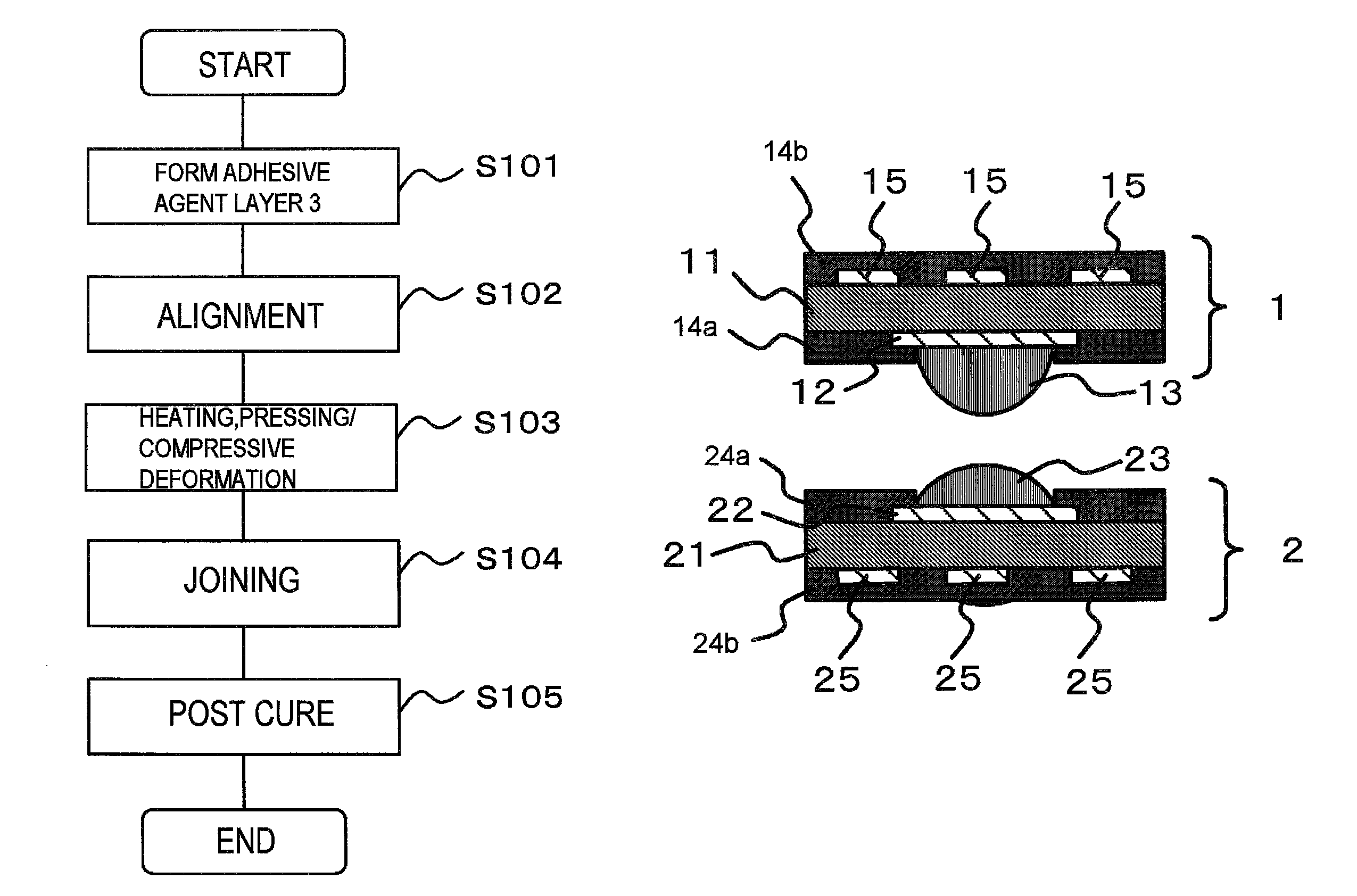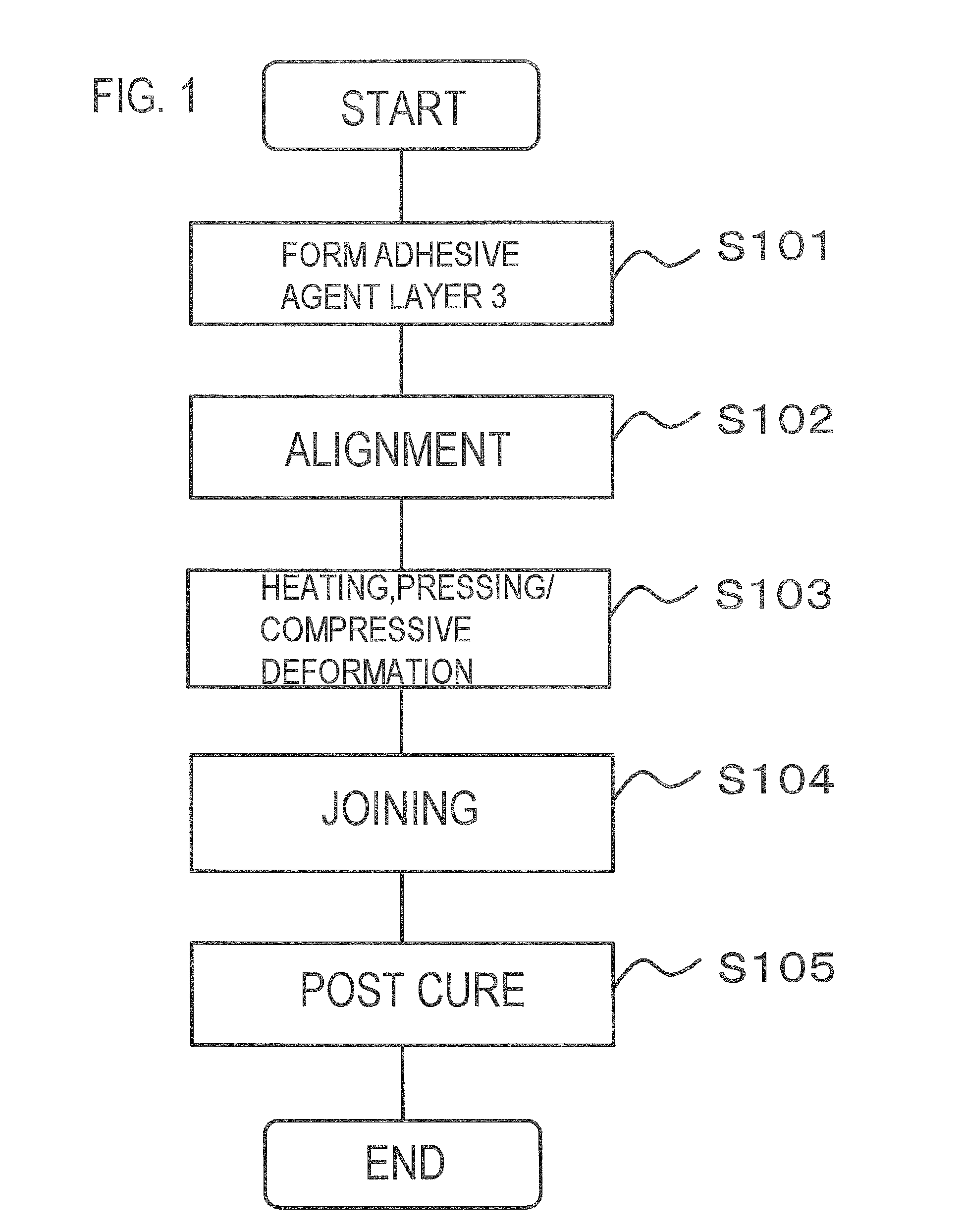Electrical connection and method of manufacturing the same
a technology of electrical connection and manufacturing method, applied in the direction of manufacturing tools, sustainable manufacturing/processing, final product manufacturing, etc., can solve problems such as electrical coupling failure, and achieve the effects of stable junction shape, enhanced electrical coupling, and high efficiency
- Summary
- Abstract
- Description
- Claims
- Application Information
AI Technical Summary
Benefits of technology
Problems solved by technology
Method used
Image
Examples
example 7
[0125]According to the process for manufacturing the electronic component as described above, the first substrate (substrate with solder bump) having the solder bump of a height above the solder resist of 40 μm and the second substrate (substrate with solder bump) having the solder bump of a height above the solder resist of 40 μm were obtained. Subsequently, as described above, the solder bump of the first substrate is joined to the solder bump of the second substrate by employing the adhesive tape of example 1 to manufacture the multiple-layered circuit board (electronic component). The connectivity, the junction cross section, and the expansion of the adhesive agent layer by the compression were evaluated for the obtained multiple-layered circuit boards according to the above-described method.
[0126]In example 7, [total of height of the solder bumps A+B]−[film thickness C]=50 μm before the compressive deformation, and [total of height of the solder bumps D+E] after the compressive...
example 8
[0127]According to the process for manufacturing the electronic component as described above, the first substrate (substrate with solder bump) having the solder bump of a height above the solder resist of 18 μm and the second substrate (substrate with solder bump) having the solder bump of a height above the solder resist of 18 μm were obtained. Subsequently, as described above, the solder bump of the first substrate is joined to the solder bump of the second substrate by employing the adhesive tape of example 1 to manufacture the multiple-layered circuit board (electronic component). The connectivity, the junction cross section, and the expansion of the adhesive agent layer by the compression were evaluated for the obtained multiple-layered circuit boards according to the above-described method.
[0128]In example 8, [total of height of the solder bumps A+B]−[film thickness C]=6 μm before the compressive deformation, and [total of height of the solder bumps D+E] after the compressive ...
PUM
| Property | Measurement | Unit |
|---|---|---|
| melt viscosity | aaaaa | aaaaa |
| frequency | aaaaa | aaaaa |
| height | aaaaa | aaaaa |
Abstract
Description
Claims
Application Information
 Login to View More
Login to View More - R&D
- Intellectual Property
- Life Sciences
- Materials
- Tech Scout
- Unparalleled Data Quality
- Higher Quality Content
- 60% Fewer Hallucinations
Browse by: Latest US Patents, China's latest patents, Technical Efficacy Thesaurus, Application Domain, Technology Topic, Popular Technical Reports.
© 2025 PatSnap. All rights reserved.Legal|Privacy policy|Modern Slavery Act Transparency Statement|Sitemap|About US| Contact US: help@patsnap.com



